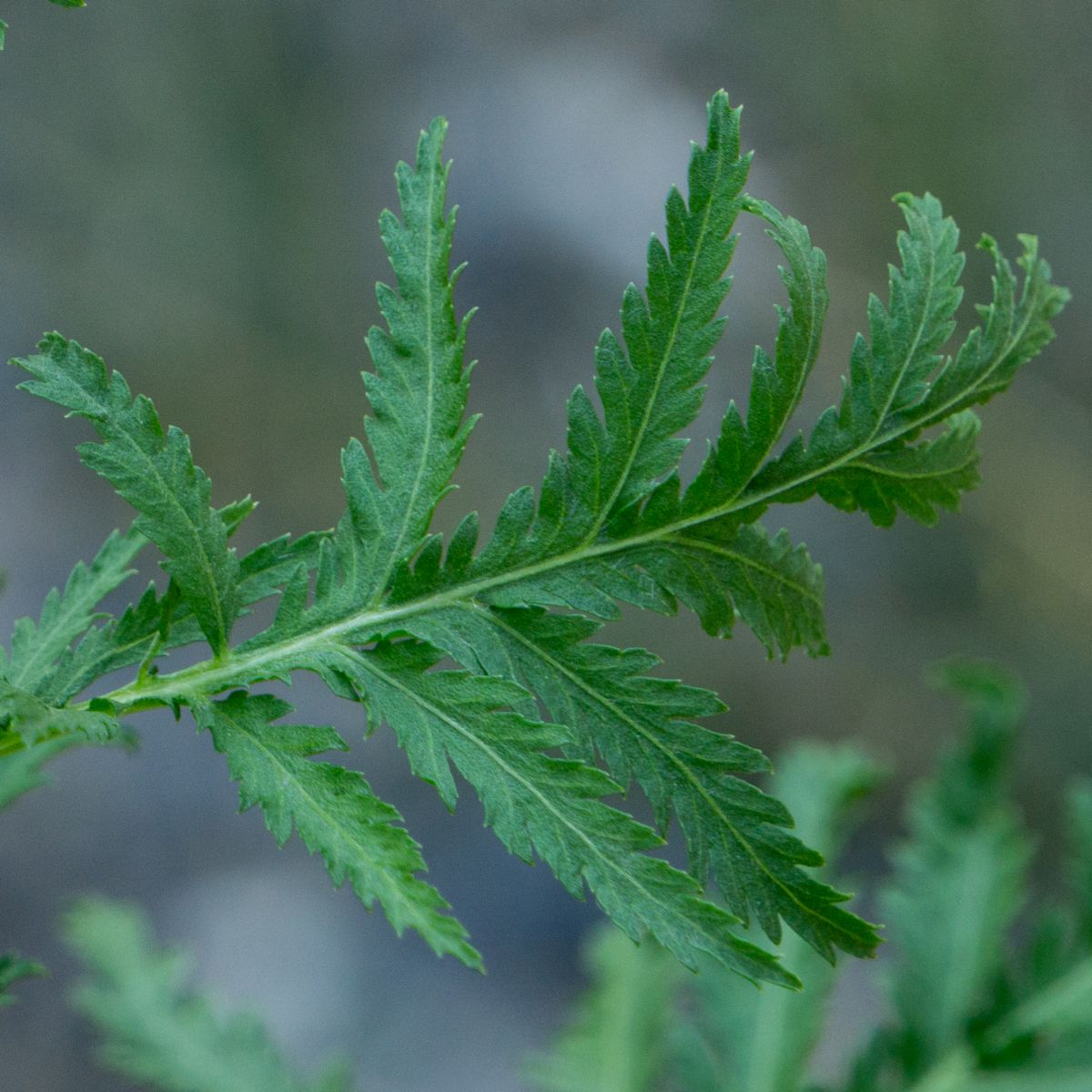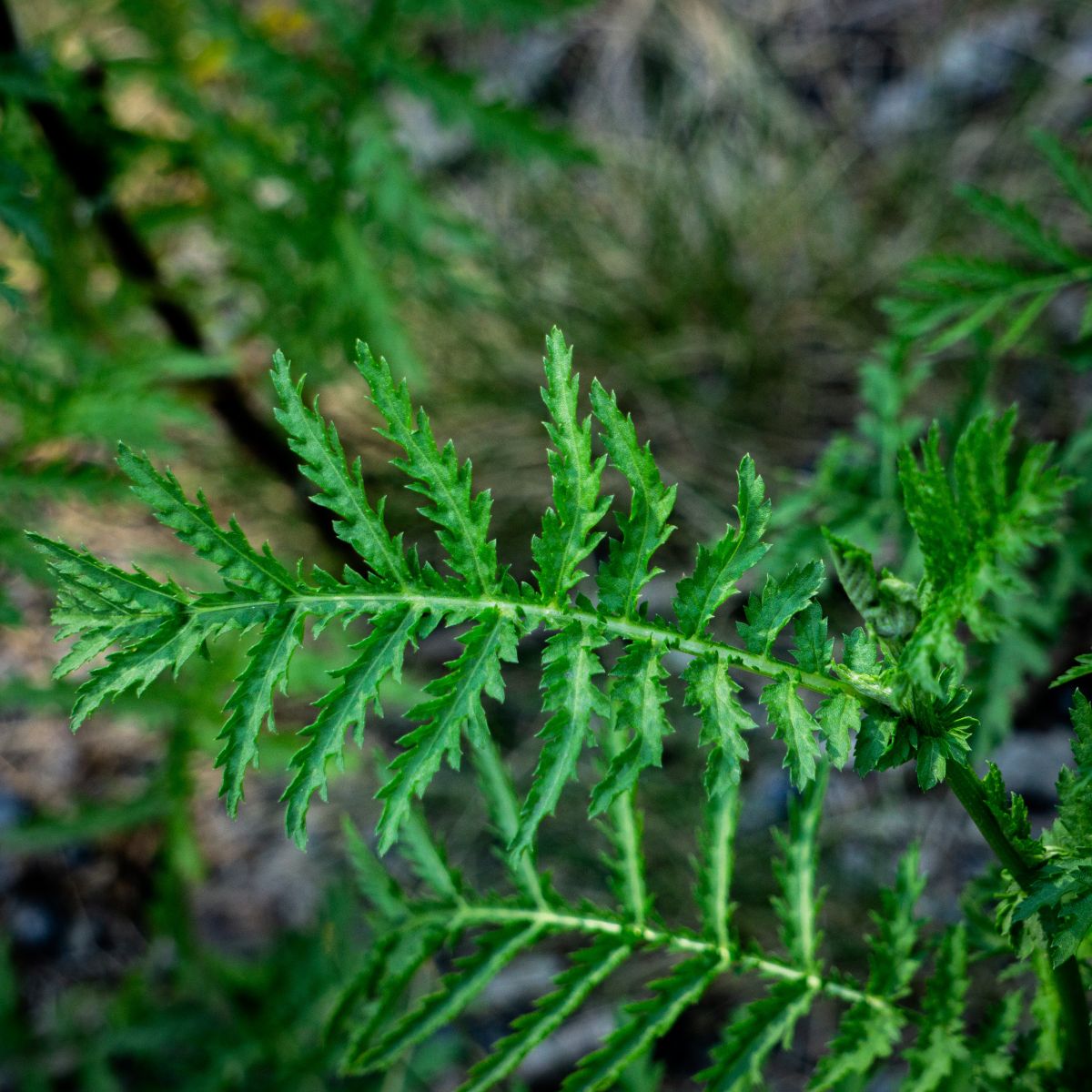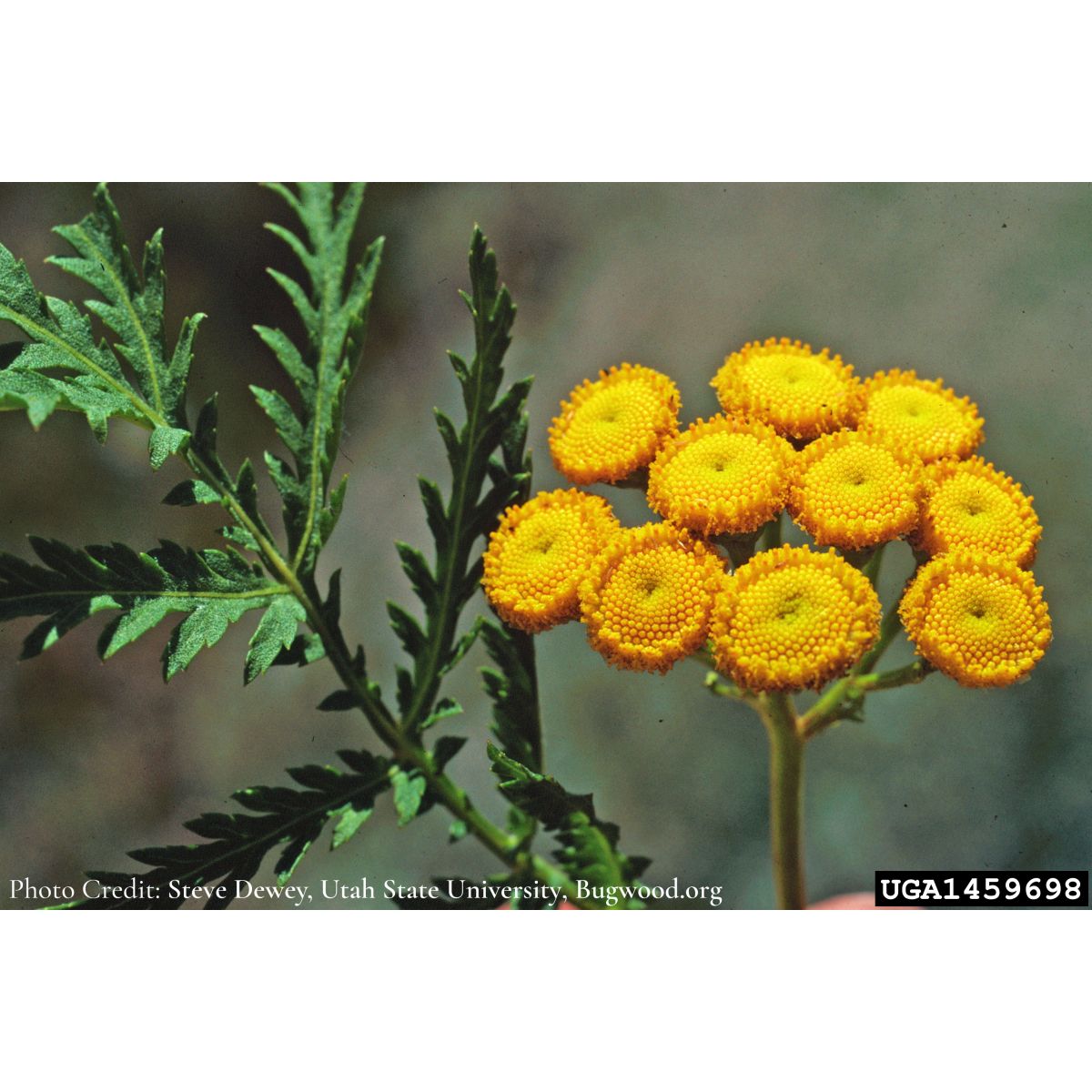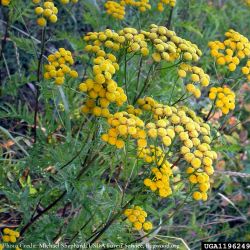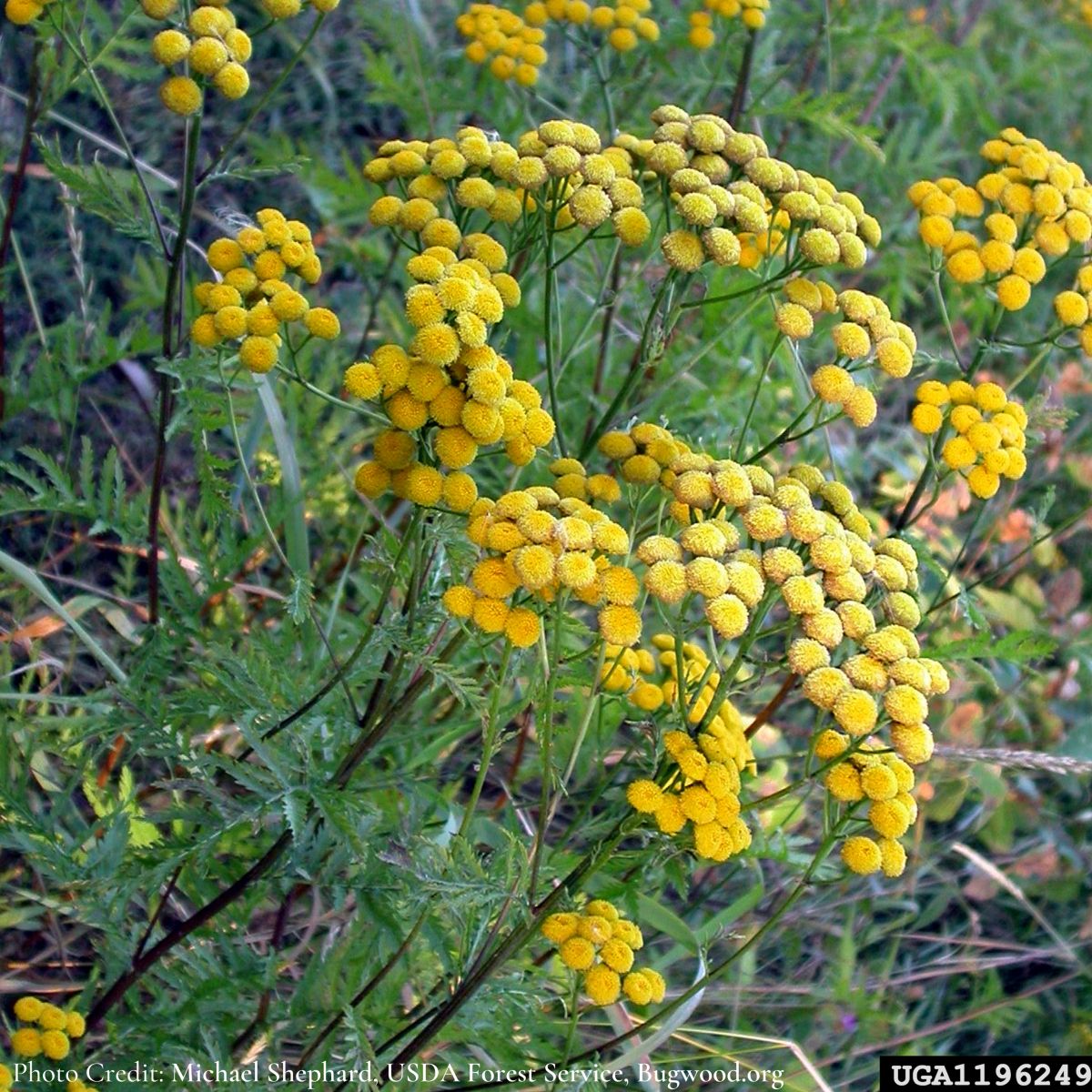
Priority: Contain
General: Tall aromatic plant with clusters of yellow flowers.
Height: Grows to 1.5m.
Flowers: Flowers are yellow button-shaped with no petals. The form dense, flat-topped clusters at the top of the plant.
Leaves/Stems: Leaves are a fern-like shape , are dark green and serrated. Stems are often purple to red in colour and dotted. When crushed the leaves and stems have strong odour.
Root: Creeping root system. Often short, thick and many lateral roots.
Garden Tansy
Tansy Ragwort (Senecio jacobaea), another invasive plant.
Differences: The key difference is the flowers. Tansy ragwort has petals and Common tansy does not.
Where did it come from? Originally from Europe and introduced as a garden ornamental and a medicinal herb.
Where does it grow here? Scattered at low to mid-elevations especially disturbed sites like roadsides, gravel pits, and pastures. It prefers full sun and well-drained soils. It is more abundant in the areas of the region that receive more moisture like the highway corridor between Lillooet and Pemberton.
Reproduction: It grows by seed and root.
When does it grow, flower & seed? Sprouts April-May. Flowers June-August. Seeds September-October.
Spreads By: Highway activities like mowing and grading does spread this plant to new locations. Spreading of seed infested gravel onto highways also establishes new locations. People do plant this in their gardens.
Plant Type: Perennial.
- Not a desirable forage plant. Toxic to livestock if they consume large quantities.
- Forms dense stands and replaces native plants important to wildlife.
- Could be toxic to humans if ingesting large amounts.
- Review your property regularly for this species.
- Treatment Remove small patches before it flowers & sets seed. Mowing or cutting can prevent seed spread but the plant will re-grow from the root. Manual removal will require digging up the entire root and is possible only if the plants & infestation is small. Wear gloves to prevent skin irritation if hand-pulling. Other methods should be considered.
- Cover bare patches or disturbed soil by planting or seeding with non-invasives.
- Check areas where you have removed invasives for any new plants that year and in future growing seasons.
- Dispose of invasive plants responsibly. Bag them for disposal at the local landfill. Composting and burning are not recommended.
- Contact LRISS for specific treatment recommendations.
Southern Interior Weed Management Committee. 2016. Invasive Plants of the Southern Interior BC. 86pgs.
Okanagan Invasive Species Online website
Photo Credits:
Michael Shephard, USDA Forest Service, Bugwood.org
Kathryn Young
Photo Gallery
